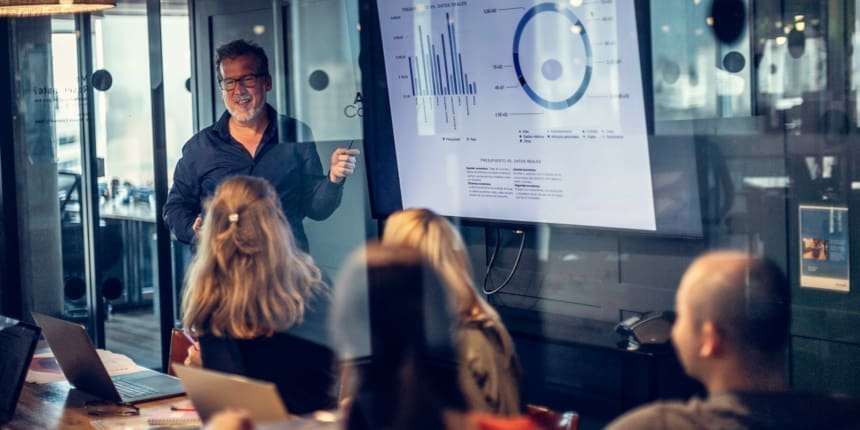
Navigate an unpredictable landscape with actionable, data-driven strategies tailored for your business from the brand down to the local level.

The term “growth hacking” is bandied about a lot these days. At this point, it even has its own job titles, responsibilities, and expert practitioners. But what exactly does the soundalike term “growth marketing” mean? Is it the same as growth hacking or something complete different?
When it comes down to it, growth marketing is all about getting the right kind of people to your business in the first place. Whether they’re at the top or the bottom of the funnel, we’re talking about the people most likely to buy from your business. And more often than not, search engine marketing (SEM) is the most effective way to transform these prospects into customers.
In contrast to various other digital disciplines, SEM isn’t a one-time project; it’s a long-term strategy to attract more qualified prospects and convert them into paying customers. With that in mind, here are our top tips to get on the path to sustained success in SEM.
B2B and B2C companies sometimes lack dedicated landing pages for specific products or ad campaigns. Since they can’t know where the leads are coming from, it’s hard for them to convert and measure their paid search endeavors. Before your campaign goes live, take the time to create landing pages for each product and service, each of which should be complete with conversion-tracking contact forms.
Depending on the nature of the product or service you’re selling, users may be unlikely to make an immediate purchase. Nevertheless, the landing page is where you can spotlight your value proposition and usher users to the next step in their purchase decision—sharing their contact details with you.
You may think it obvious, but far too many advertisers fail to incorporate the human element into their media. Remember that, at the core of most things, humans are simply seeking out humans; a fact that’s all too easy to forget in the era of AI and automated marketing.

Regardless of the type of product or service in question—and whether it’s a B2B or B2C context—people still want to communicate and do business with other people. Your ads, landing pages, and other media should feature real faces and scenarios to show visitors that your company is run by people, for people. Testimonials are also potent, but make sure you don’t end up with text-heavy assets with no visual flair. A picture is worth a thousand words, as the saying goes.
Who are the people clicking on all of those links? Customers go through five distinct phases of purchase intent, according to Microsoft research:
Awareness: An FMCG brand is launching a new toothpaste and wants to build brand awareness by promoting the product on the Microsoft Audience Network to drive search activity further down the funnel.
Consideration: A travel advertiser wants to differentiate in the competitive weekend breaks market. By overlaying in-market audiences and LinkedIn targeting they can use personalised messaging to stand out from the competition.
Conversion: A telco brand wants to drive more conversions of its SIM-only phone deals. Using remarketing to target people who have landed on specific web pages allows them to narrow in on those people most likely to convert.
Maintain: An insurance brand wants to maintain their relationship with existing home insurance customers but cross sell for a new life insurance policy. Excluding prospects and targeting their long-term customers allows them to create more personal messaging.
Expand: An automotive advertiser wants to find more people like their best customers to test drive its latest model. Using Similar Audiences, they can expand the reach of their marketing to find lookalikes with similar profiles who are likely to be interested.
Subscribe to our monthly newsletter.
Customers who click on your sponsored search and social advertisements are more likely to buy and spend more money with your business. For commercial-related search ads, adapt your bidding approach by increasing your keyword coverage.
After an ad airs, search volume has the potential to rise for many days. In certain cases, search volume has been known to increase by nearly 30% long after the last ad in a campaign had aired.
Running search and display ads concurrently might help you decide which channel drives the greatest results (or if a combination of the two is the most effective deployment).
Because mobile accounts for roughly half of all web traffic, your Google Ads strategy has to account for mobile devices without sacrificing desktop usability. After all, both desktop and mobile audiences are crucial. On average, desktop conversions are more than 50% higher than mobile conversions, but mobile devices account for more than half of all ad clicks.

Fortunately, Google Ads’ device targeting allows you to optimize your media for specific scenarios. Desktop ads usually allow you to include a short lead-in, your unique selling point (USP), and promotion details. In contrast, due to the relatively limited real estate on mobile devices, make sure your mobile ad extension content begins with your USP and other decision-critical information.
SEM is a fast-moving and highly competitive environment, but with the right approach—and the right team in your corner—you can get ahead of the curve. Schedule a chat with our paid search experts and we’ll show you how we can unleash your business’s potential.
Navigate an unpredictable landscape with actionable, data-driven strategies tailored for your business from the brand down to the local level.
Navigate an unpredictable landscape with actionable, data-driven strategies tailored for your business from the brand down to the local level.
Navigate an unpredictable landscape with actionable, data-driven strategies tailored for your business from the brand down to the local level.
Subscribe to our monthly newsletter.